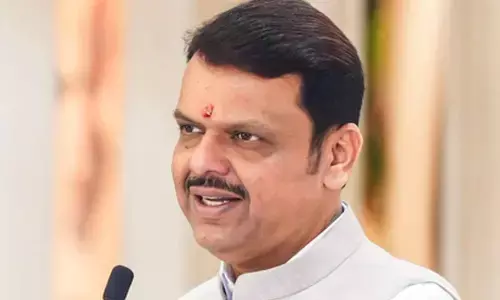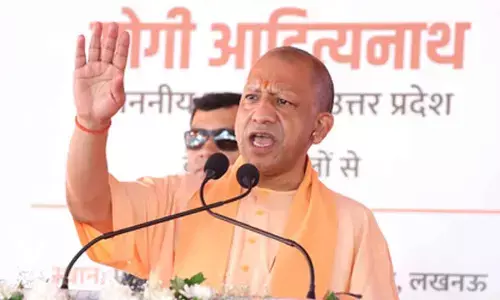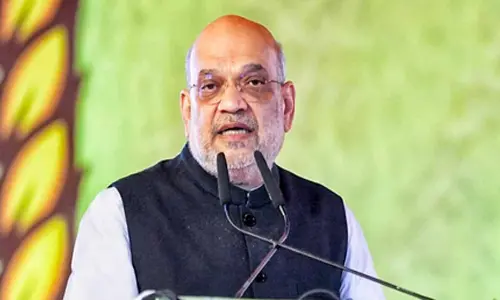An agenda for government schools

The latest round of National Sample Survey (NSS) data reveals that enrollments in private schools are surging in India, indicating students’ increasing preference for private institutions at the cost of government schools.
Right to free and compulsory education implies quality education
The latest round of National Sample Survey (NSS) data reveals that enrollments in private schools are surging in India, indicating students’ increasing preference for private institutions at the cost of government schools. The States of Telangana and Andhra Pradesh are no exception to this disturbing trend. A more startling fact is that this trait is more pronounced in the two States than elsewhere in the country. Of course, one is not casting aspersions on the private schools and the qualitative role they play in the overall growth of education.
Alas, the gradual derailment of public education will take away a substantial segment of Indian society, especially the poor and the marginalised, away from the ambit of quality education. It increases the cost of education, thereby creating pressure on the meager incomes of the poor. As Noble laureate Amartya Sen pointed out, the collapse of government schools means a serious threat to girl-child education as families from the lower economic strata prefer to send their sons to a private school due to patrilineal social relations.
As many as 62 per cent of children in India attended a government primary school in 2014, compared to 72.6 per cent in 2007-08 – indicating a surging preference for private schools – according to an India Spend analysis of data in a recent survey on education. An urban-rural divide is evident: Only 31 per cent of children attended government primary schools in urban areas as against 72.3 per cent in the interiors in 2014. Even today, government schools have more qualified teachers when compared to the average private schools. More strikingly, as the number of teachers in government schools increases, there is a corresponding decline in the strength of students in the two States.
The government schools suffer from crisis of credibility and confidence. The problem is not with who owns the schools. It is more to do with the way we run our government schools. Instead of an ideological aversion to government-run schools, one has to investigate the reasons for the pathetic state of affairs in government schools in a more pragmatic manner. This is evident from the fact that social welfare and tribal welfare residential schools in Telangana recently witnessed an increase in demand. The cat may be black or white; after all, it should catch the mice.
In a way, the clincher or the decisive reason that make one prefer the private institution is in the medium of instruction-English, which holds the key to wider vistas across the globe. With globalisation and privatisation gaining primacy, people including those coming from the disadvantageous and economically marginalised families feel their upward mobility is possible only by educating their children in English medium. Realising this, even certain government schools experimented with English medium.
This initiative saw increased enrolment in many schools, but there are many entangled policy and practical issues in this regard that need urgent attention. Unfortunately, governments are yet to work out a coherent policy on allowing English medium in government schools. The policy in this regard suffers from ad hocism and chaotic understanding among officials in the Education Department itself. Even where the government allowed English medium, it is yet to recruit exclusively trained teachers. Thus teaching in English medium is still left to the voluntary initiative of a few enterprising teachers.
With the absence of English medium, government schools do not offer pre-primary education, which is in stark contrast to the private establishments, which lure parents and guardians their way. There is an increasing urge for quality education rather than mere enrollment. The competitive economic and educational landscape is the reason behind increasing urge for quality and excellence. But there is a consistent decline in the learning outcomes in the country, including in the two States.
No more than 26 per cent of children in Class V can do arithmetic division, which is a drop of more than 10 per cent over four years, according to the 2014 Annual Status of Education Report by Pratham, an education NGO. There is a growing perception that private schools provide more and better learning outcomes compared to government schools. This is not because private schools boast of better qualified teachers but because of an absence of social control over government schools.
Teacher absenteeism in government schools continues to be the problem, which one cannot ignore. Even at the fundamental level, there is a collapse of monitoring and supervising system in the government sector. Continuing impasse over uniform service rules has stalled the promotion system in the Education Department for over 12 years. As a result, most of the Mandal Educational Officers (MEO) and the Deputy District Educational Officers posts, which form the critical link in monitoring apparatus, are vacant.
As families with even minimum social and economic avenues shift their children to private schools, government schools are left with children coming from socially and economically marginalised communities. These sections have little or no social control on the teaching, learning process in the school. Meanwhile, several government schools are plagued by a lack of basic facilities to impart meaningful education. Several studies have reinforced this factor. The governments ensure teachers strength based upon teacher-pupil ratio. Such an approach is fundamentally flawed as every class and every subject requires at least one teacher.
The dwindling strength in government schools, especially at the primary level, is further eroding people’s confidence in government schools. This is evident from the fact that government high schools are in a better position to attract children when compared to government primary schools. The global experience shows us that educational standards critically depend on a host of factors. The quality of teacher education has substantially declined with the mushrooming of private teachers training institutions. There is no mentoring system for new recruits and young teachers.
Services of teachers are quite often enlisted for non-teaching assignments thus disturbing the teaching learning activity. The training and retraining of teachers remain a ritualistic activity. Institutional arrangement for continuous and comprehensive upgradation of teacher’s skills is absent even though there are lakhs of teachers working in the government sector and multiple training events are organised quite frequently.
The natural differences in how government and private sectors manage themselves are also showing their adverse impact on the quality of teaching and learning in government schools. Unlike in the private sector, there is no incentive for efficiency and no punishment for lack of performance in government sector, thus dampening motivation to excel.
The parental intervention in the functioning of a school is critical for better management. The parents of children in government schools neither have leisure, awareness nor social status to exert pressure on schools in government sector. There is an asymmetry of relationship between such parents and the system that manages government schools. Parents and children have no choice here. But, in the private sector, there is competition and choice thus forcing a sense of accountability amid the competitive zeal on private managements.
The unionisation of teachers is primarily responsible for improving the condition of teachers in government sector. Thanks to unions, democratic system could replace arbitrary transfers of government teachers. Improved service conditions, including wage structure, helped attract the cream to the government sector.
However, unionism has also incapacitated the administration to enforce teaching learning standards to an extent. Even in government sector, there are good results wherever there is such an effort overcoming the pressure of organised teachers unions. Therefore, the government needs to take unions into confidence to enforce standards at any cost.
Efficiency and productivity have no ideology and therefore no exemptions. In a bid to brace up for the cut-throat competition and survive in the free market, private schools offer additional tuition for children, especially in higher classes, to augment basic classroom teaching. The government schools could also attract more children wherever such efforts are made by the teachers on their own or by active schools management committees.
Education is the fundamental right of every child. Right to free and compulsory education implies quality education. Despite legislative entitlement, government schools languish with myriad problems that demand urgent policy intervention. Otherwise, it would prove to be a herculean task to stem the steady shift of children from government to private schools. The onus is on the policy-makers to stem the rot or whatever remains of government school education.














